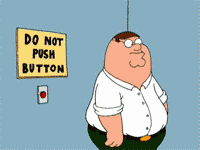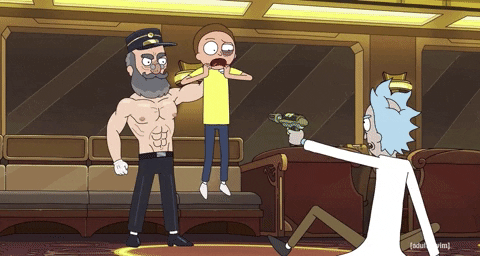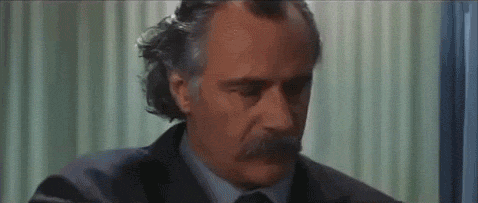Hey there, design enthusiasts! I’ve got a topic to discuss today – how motion design applies to UI/UX design. My journey has been a whirlwind of creative experiences, starting as a video editor, transitioning into motion design, and falling head over heels for UI/UX design. So, sit back, relax, and explore the fluid magic of motion in UI/UX design.
Let Me Tell You A Short Story About Motion

People use motion as a language in many ways, consciously and unconsciously. Just like spoken or written language, motion can be used to convey meaning and communicate ideas and emotions. In nonverbal communication, people often use body language and gestures to express thoughts and feelings. A smile, nod, or shrug of the shoulders can convey a wide range of emotions and attitudes, from happiness and agreement to confusion and indifference.
In dance, motion is used to express complex narratives and emotions. Dancers use their bodies to convey everything from joy and celebration to sadness and despair without saying a single word.
In film and animation, motion creates a sense of atmosphere and mood. The way a camera moves, or the speed and direction of an animated character’s movements, can convey everything from suspense and excitement to calm and tranquility.
Motion can communicate a brand’s values and identity in graphic design and branding. How a logo animates, or the motion design of a website, can convey everything from innovation and creativity to tradition and stability.
In short, people use motion as a language to convey ideas and emotions in a way that transcends spoken or written language. It is a powerful tool that can communicate on a level that goes beyond words and has the potential to connect people in profound ways.
Motion Design in UI/UX?
Motion design has become an integral part of UI/UX design, as it enhances user experience by making interactions with digital products feel more natural and intuitive. In this blog, we’ll explore the role of motion design in UI/UX and the benefits it provides to users.
Motion design in UI/UX refers to the use of animation, transitions, and other dynamic elements to create engaging, visually pleasing interfaces. It is an essential tool for creating user-centric designs that are functional and delightful.
Motion design can be used in a variety of ways in UI/UX, including:
- Seamless Transitions:
First things first, let’s talk about transitions. Motion design can create smooth and engaging transitions between different UI elements or screens. By adding subtle animations, we can guide users through the interface and help them understand the flow of the application.

- Visual Feedback:
Providing users with visual feedback is essential in creating an intuitive UI. Motion design helps us convey the consequences of an interaction, like a button press or a swipe, making the interface more responsive. For example, a simple animation can show users that their action has been acknowledged, helping to build trust and positive reinforcement.

- Hierarchy and Emphasis:
Motion design can be used to emphasize the importance of specific UI elements or to establish a hierarchy. Adding subtle animations or transitions to specific components allows us to draw the user’s attention and guide their focus. This is particularly useful in highlighting the design’s calls to action or key information.

- Micro-interactions:
Micro-interactions are small, functional animations that improve user experience by making it more engaging and enjoyable. These delightful little moments can be achieved through motion design, turning a mundane task into a more memorable and satisfying experience. Think of a playful loading animation or a quirky button hover effect – small details that make users smile.

- Storytelling:
Just like in videography, storytelling is crucial in UI/UX design. Motion design allows us to create a narrative within the interface, helping users understand the context and purpose of the product. By weaving animations and transitions together, we can create a cohesive and immersive experience that resonates with users on a deeper level.

- Brand Personality:
Motion design is an excellent tool for showcasing a brand’s personality within the UI. By incorporating custom animations and transitions that align with the brand’s identity, we can create a unique and consistent experience that leaves a lasting impression. This helps the product stand out and fosters brand loyalty and recognition.

- Enhancing Accessibility:
Motion design can also play a role in making a UI more accessible to a broader audience. By using motion to provide additional context or feedback, we can help users with diverse abilities navigate and interact with the interface more efficiently. However, it’s essential to ensure that these animations don’t hinder the experience for users with motion sensitivities or other accessibility concerns.

Benefits of Motion Design in UI/UX
Motion design is a powerful tool that can significantly enhance the user experience in UI/UX design.
One of the most significant benefits of motion design is its ability to improve user engagement. By adding dynamic animations, interfaces become more visually appealing and intuitive, increasing user satisfaction.
Additionally, motion design can enhance usability by helping users understand how to interact with the interface and navigate it more easily. Not only that, but it can also make interfaces more accessible to users with disabilities. Animations can also convey information quickly and efficiently, such as when a loading spinner indicates that content is being loaded.
Moreover, motion design can reinforce a brand’s visual identity and personality, making the interface more cohesive and memorable. Last but not least, motion design can create emotional connections with users, making them feel more invested in the interface and the brand behind it.
In Conclusion
Motion design and UI/UX design are a match made in heaven. By incorporating motion into our UI, we can create more engaging, intuitive, and memorable experiences for users. As I continue to explore the exciting world of UI/UX design here at BrightMarbles Group, I’m constantly reminded that motion is a powerful tool in our design arsenal. So, let’s embrace the fluid magic of motion and elevate our designs to new heights!
About Author
Marko Vladušić is a UI/UX and Motion Graphics Designer, with more than ten years of experience on game-changing projects. He approaches all things visual from a user-experience point of view – be it video animation and editing, interaction design, or any other digital visual art. With his exceptional eye for detail and deep knowledge of latest tech solutions, Marko is a visual playmaker who helps every team see things from a different perspective.
